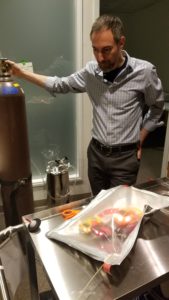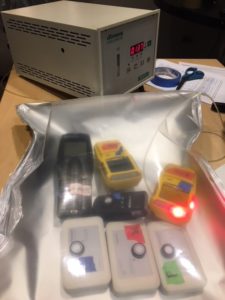The detection of low quantities of oxygen (less than 0.3% by vol ume) is essential to the creation of an anoxic environment capable of eradicating all stages of insect life. To ensure sufficiently low oxygen levels throughout an anoxic treatment, digital oxygen meters are commonly used. Most of these meters, which are lower in cost than more precise oxygen analyzers, are manufactured for the purpose of monitoring human safety, and therefore, are designed and calibrated for the detection of oxygen near the natural atmospheric amount of around 20.9% at sea level.
ume) is essential to the creation of an anoxic environment capable of eradicating all stages of insect life. To ensure sufficiently low oxygen levels throughout an anoxic treatment, digital oxygen meters are commonly used. Most of these meters, which are lower in cost than more precise oxygen analyzers, are manufactured for the purpose of monitoring human safety, and therefore, are designed and calibrated for the detection of oxygen near the natural atmospheric amount of around 20.9% at sea level.
How can we be sure that the oxygen level readings detected by the digital oxygen meters used in anoxic treatment are accurate? Is it possible that when our oxygen meters display a reading of 0.3% oxygen by volume or lower, the oxygen content inside the sealed environment is actually higher?
To explore these questions, Eric Breitung of the Metropolitan Museum’s Science Department and Gabrielle Crowther of Art Conservation Group tested a set of oxygen meters against an oxygen analyzer with more sensitive capability for the detection of gasses with fairly surprising results. Some tracked very low oxygen levels well, while others read zero percent oxygen at levels much greater than 0.3%. The overall conclusion was a strong recommendation to regularly verify your meter against a standard!
A full report is now available on the Museumpests website for all to read.
